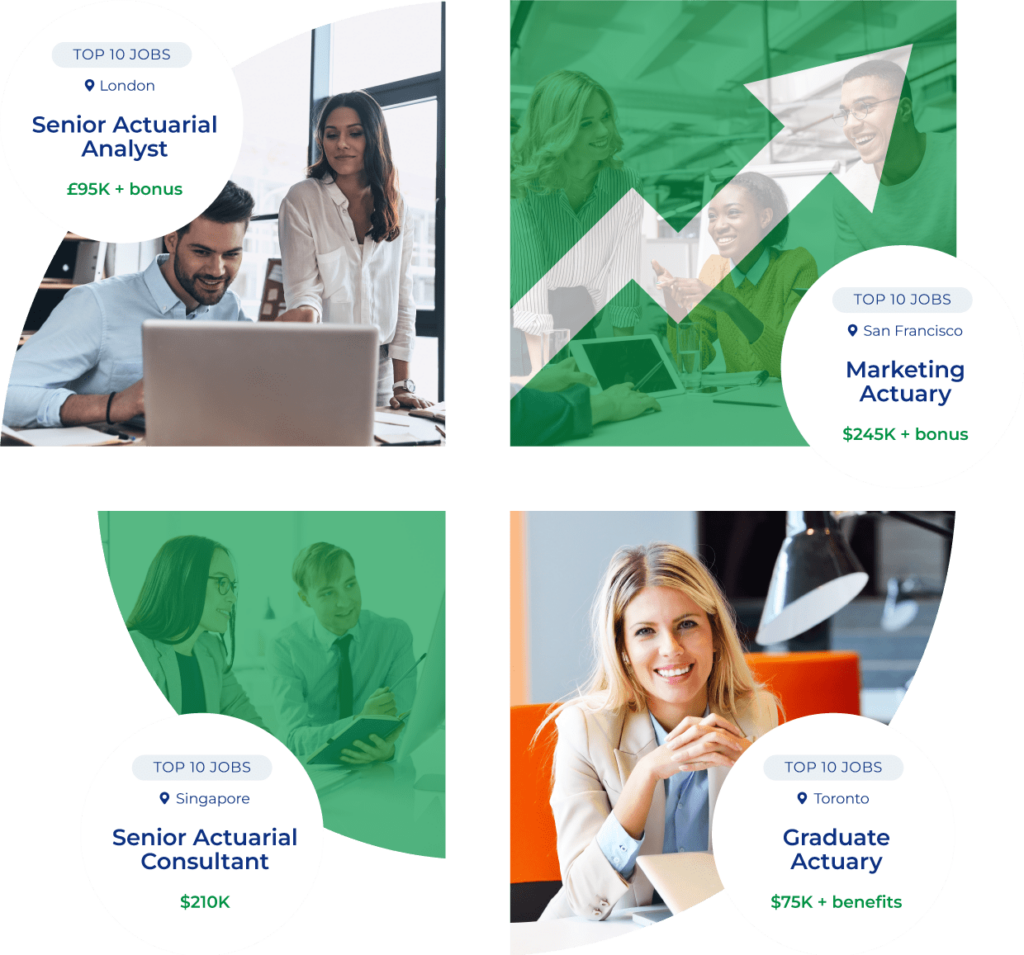Should Actuaries Learn Data Science?
Explore the transformative potential of data science for actuaries, enhancing their capabilities in risk analysis and decision-making, ensuring they remain indispensable in a data-driven financial landscape.
The past century will be noted in history as a time when we saw a number of advancements in industries to make them more fit for purpose in the future.
We have seen the introduction of artificial fertiliser to revolutionise the agriculture industry, the birth of the aeroplane to change the travel industry, the advent of the microchip to transform the communication industry and the discovery of antibiotics that has gone on to change the medical industry.
Yet the actuarial profession looks at itself and asks, how can we future proof our industry?
The most common answer: Data Science.
Is Data Science Useful for Actuaries?
What is data science and why is it important?
Ever since the dawn of the digital age we have seen exponential growth in information gathering which has accumulated to this idea of ‘big data,’ where we now have these extensive data sets that we can analyse to find trends and patterns.

The issue then always arises as to how to process this very raw and difficult to handle data, this is where data science comes in.
Data science is the set of skills which are used to extract, cut, analyse and present this data in ways that is useful to the user, with a view to ultimately using this data to predict and manipulate real world scenarios.
Is Data Science the Same as Actuarial Science?

This field has now led to a very lucrative profession, the data scientist, which has grown massively over the past 10 years.
But what is it that this, the “sexiest job of the 21st century” actually entails?
How exactly is it that they use this digital data?
Data scientists are usually highly skilled mathematicians who use the data at their disposal to try and find trends in the data to provide a view for the future, which sounds very similar to a brief description of a traditional actuary.
They use complex systems such as machine learning (ML). ML is the use of algorithms and various statistical models to process data to mould the system to act like a human and with time and alterations, become as accurate and intelligent as possible. This is closely linked to artificial intelligence (AI). A continuous feed of up-to-date data will aid the system to become more authentic and ultimately, remove the need for human interference and for the system to make its own decisions.
No better example of this than the documentary “AlphaGo,” where Google’s Deepmind laboratories developed a computer program that could play the ancient Chinese board game, Go. Not only could it compete in the game but it went on to comprehensively defeat a Go world champion. This goes to show that the power of ML far outweighs the computation of the human brain.
Now, this does not go as far as to say that humans will now be defunct when it comes to predicting the future as there will always be a demand for human judgement in the majority of scenarios. However, when you have the devices such as ML and AI available to you, then developing a mix of said skills into the world of people whose daily job it is to in some way “predict the future,” can only lead to improve employees ability to carry out their role.
Data Science in Insurance
Most aspects of the actuarial industry have in some way already made an attempt to incorporate data science into their offices. Looking first at the General Insurance (GI) industry and the reserving side of the business, I have seen first-hand that the biggest data problem facing big GI firms is the issue of legacy systems where the data is stored.
The major hurdle you have to jump each time is to extract the data from old systems in a way that is then usable to calculate best estimate reserves. This is where programs such as R and Python can come in to play, these are data analysis programs that have the capacity to handle bigger data sets than Excel, it is therefore quicker to compute when using these large data sets.
I also believe ML and AI are going to be the catalyst to take GI reserving to the next level. If you can harness these systems to evolve the techniques of the traditional actuary to analyse historical claims data, it will lead to problems being solved more efficiently and with less manpower required.

Moving on to with regard to pricing, traditionally GI pricing has relied heavily on generalised linear models (GLMs) to calculate premiums. Whilst GLMs have their advantages, such as being relatively easy to interpret and understand what role each predictor is having on the output, they can be replaced by ML techniques. A type of which are classified as “supervised models,” where the user gives the inputs and outputs required and using ML techniques the model will find a way to form a path between them.
The main technique of which is using a regression model to predict frequency and severity (ACPC) of claims. Knowing a more dependable measure frequency and ACPC will therefore lead to pricing risks more fairly in the future which benefits both sides of the policy.
As people become more acclimatised with these models they can then look to add more variables and actively pursue an increase in accuracy.
On the other hand, a criticism that arises with the algorithms used in ML is the “blackboxness” that if there was an issue, which could easily lead to mispricing, occurring in the model, it is hard to notice immediately and could lead to potential financial loss. This is due to it being hard to breakdown the algorithms within the system and it not always being straightforward to interpret, unlike GLMs.
However, the data science community is on a mission to debunk this “myth” and and are trying to get those new to the idea of data science to understand that it is too simplistic to blame a problem with the system on “blackboxness.” This is because, in the majority of issues where a problem arises, it is usually down to the inputs given by the user and the type of model they selected in the first place.
In terms of current implementation within insurance we have already seen how the use of AI would lead to an increase in claim settlement rates for larger insurers who have implemented new techniques to calculate claim costs. Harnessing the power of AI, a policyholder can, with the use of a few images of the damage they have received, get an estimate on repair costs in less than a working day. All this can occur with minimal human interaction due to the power of these processes. Algorithms using past data records on prior damage will be able to give a fairly accurate estimate back to the customer.
There’s no end to the many possible uses of audio, video and imagery techniques within the GI industry, which can cut down on a company expenses. For example, if there was a way to instantly harness CCTV footage at the site of a road traffic collision, an insurance company could be notified that a policyholder, through the means of their licence plate, has been involved and be able to inspect that damage either through the CCTV or by contact of to the policyholder.
Yet again, this would lead to faster claim settlement and a more efficient company process. Even though these systems wouldn’t directly impact actuaries, due to their unique set of skills, it is something they could look to help implement.
Schemes like this are not only limited to the GI industry, the use of big data has been rife in the life insurance industry since the introduction of wearable technology. The multitude of data that wearable technology can gather and pass back to the insurer is of great importance and leads to a fairer premium being charged.
Yet again this is something that is open to growth, as more and more people are using smartwatches, smartphones and home assistants every day, there is no limit to the expansion of connectivity. This is will mean insurers will be able to have a more accurate profile of their policyholders and understand their trends and therefore, offer a more personal premium which will be seen as a benefit to the consumer and encourage them to use connected devices in the future.
Data Science & Insurtech
Using ML and AI, we have seen the transformation of InsurTech, particularly over the last 10 years. Due to this data centric approach, insurtech is trying to eat into the traditional insurance market and is doing so successfully.
One example of how this data driven approach has been used is by the insurtech company “Flock,” who look to insure drone pilots. A very good example of 21st century cover that has shown how the insurance industry has moved on, they use real time data such as population density and wind speed to quantify, insure and mitigate drone fight risks. This cover has been used by the NHS for covering medical deliveries using drones. Using the ML techniques Flock have been able to reduce risk exposure by 15%. This is just one example of how data science is influencing InsurTech and there are countless others.

With all these developments across the insurance industry, actuaries can future proof their profession by immersing themselves in the world of data science, ensuring that it is a job for life and stay ahead of the curve. The question is “How?” If actuaries can be upskilled to better work with data using systems such as R or Python. Both readily available programs, that are really useful for interpreting raw data, then this would give an actuary another feather in their cap to becoming a more rounded professional.
This upskilling can be done within actuarial departments across the board, if the demand and intention are there, then there is no excuse that a department couldn’t set aside an afternoon fortnightly to set up R/Python workshops. This is something that the Allianz UK actuarial department put in place in 2019 and they have since seen a transformation in the way their employees think of data as well as influencing the future plans of the business model. These ambitious programmes deserve the backing of management as this will lead to a more efficient workplace which is then beneficial to the whole company.
Should Actuaries Learn Data Science?

All of the aforementioned uses of a data science approach aren’t light switch moments which will kill off the traditional actuarial profession, this shouldn’t be seen as doomsday for the actuary, instead we should see it as an opportunity. An opportunity to take our industry to the next level, to ensure that we stay at the cutting edge of analytics and financial decision making, to improve the pricing in insurance and mitigate risks whilst offering a more personalised price to the policyholder.
Skills that are key to the actuarial profession such as communication, problem solving and decision making will still, always be required. The skill of competent communication is what can set actuaries who take up data science apart from the field. To have the blend of two of the most wanted skillsets in 21st century finance would make them a more rounded professional and help them develop.
So to answer the question posed, I think actuaries should welcome the onset of data science with open arms, embrace it and implement it into their daily work for the better of the industry.
FAQs About Actuaries Learning Data Science
David McNeill
“David McNeill is a Senior Actuarial Analyst at Allianz Insurance. Prior to that he was an Actuarial Analyst at Allianz. David graduated from Queen’s University Belfast in 2021 with a BSc degree in Actuarial Science. You can connect with him on LinkedIn.”
Insert Content Template or Symbol



